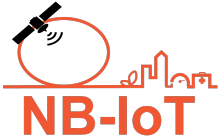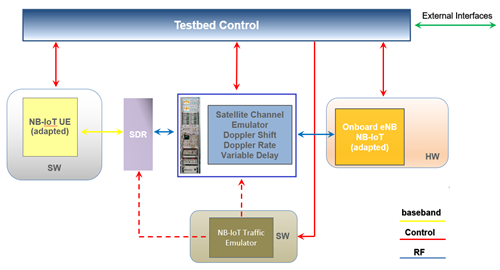NB-IoT4Space
3GPP Narrow-Band Internet-of-Things (NB-IoT) User Sensor Integration into Satellite
| Business | Start date | Prime Contractor | Client |
|---|---|---|---|
| Industry | April 2020 |
RINA Consulting | European Space Agency |
 Challenge
Challenge
Preliminary analysis have shown that the NB-IoT standard can be used by satellite systems in non-geostationary orbits under certain constraints. However, to enable the integration of user sensors employing this technology, it is necessary to develop an on-board evolved node B (eNB) capable of using a standard not originally conceived for satellite communications with adaptation and additional features dictated by the scenarios. Moreover, the eNB is preferably compatible with small satellites platforms in terms of mass, power and volume since these platforms are usually the ones selected to provide M2M/IoT services. Finally, it is also important to develop and propose UU (radio interface between UE and eNB) adaptations that would allow maximizing the efficiency of a satellite system.
The goal of the project is the development of a demonstrator in which communication between an NB-IoT user and an eNB satellite is functionally verified.
The state-of-the-art technology for NB-IoT is critically revised, referring to integration with satellite systems and associated technical requirements expected by the demonstrator.
The project aims at developing a demonstrator where the communication between a NB-IoT user and the satellite eNB is functionally verified. The main challenges are:
- assessing the impact of the non-terrestrial environment on the technologies already developed for the terrestrial component;
- spin-in terrestrial technologies in order to make them operate in the non-terrestrial component;
- developing a suitable platform for the spin-in assessment and for future standardization;
- functional and performance verification of the NB-IoT over satellite.
The focus is on the adaptation of terrestrial technologies developed and studied within 3GPP for 5G systems to satellite scenarios and their implementation on HW and SW platforms.
Approach
As project coordinator, RINA is commissioned to manage the full project cycle and is in charge of the project management (including quality and risk management). We are providing system engineering services, performing testing and roadmapping activities, and conducting LCA studies.
The main benefits of the project are the development and validation of the adaptations to the UU’s protocol stack (e.g., PHY, MAC, RLC, PDPC, and RRC layers) to make the NB-IoT radio standard viable over satellite.
Another benefit is the development of an on board eNB capable of supporting the adapted 3GPP NB-IoT standard within the mass, power and volume constraints of a small platform (<12U). The eNB integrated in the demonstrator is capable of emulating different scenarios as well as the main limiting factors in the telecommunications channel, with reference to Doppler shift/rate, mobility, possible shadowing/multipath, in order to assess performance under realistic conditions.
 Conclusion
Conclusion
The project features include:
- exploitation of experiences and knowledge from the project 5G4Space;
- monitoring of the latest 3GPP specifications, the latest 3GPP Technical Reports, and Technical documents, considering not only adaptation at PHY/MAC level, but also at RRC layer and NAS layer for control plane if required;
- identification of the widest set of possible scenarios;
- identification of the UU Interface technical requirements and adaptation based on scenario selection;
- implementation of the required adaptation by system level simulation and experimental test;
- testbed requirements, design and development, more specifically for the adapted NB-IoT and on-Board eNB;
- test plan and execution to verify the efficacy of the proposed adaptation.
Subcontractors
1. CNIT 2. Nitel 3. RAME S.r.l. 4. Thales Alenia Space Italia